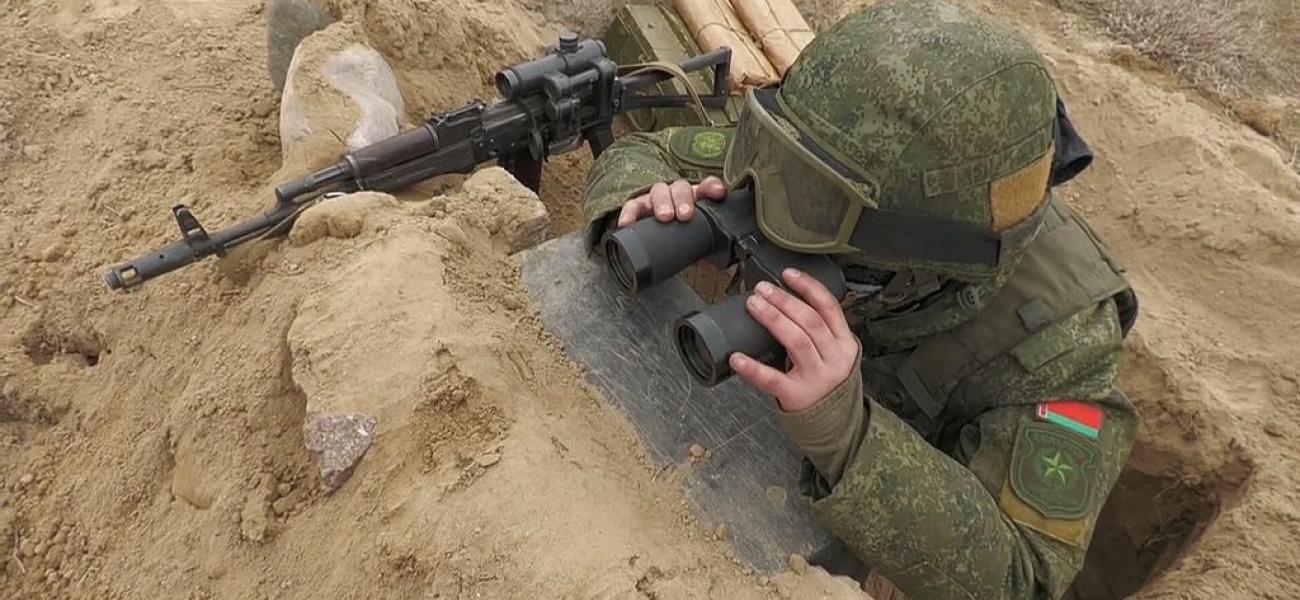
Russia Takes a Gamble in Kazakhstan
This article was originally published by Carnegie Moscow Center.
If Russia succeeds in propping up the regime in Kazakhstan and making it more pro-Russian, then the Central Asian nation could, like Belarus, become a more reliable ally and partner for Russia.
The Kremlin was caught off guard by the sudden crisis in Kazakhstan, which, having started as a protest against fuel price hikes, spread across the vast country at lightning speed this week and descended into violence in the former capital city, Almaty. Just a couple of days before New Year, Russian President Vladimir Putin hosted both the current Kazakh president Kassym-Jomart Tokayev and his hugely influential predecessor and patron Nursultan Nazarbayev in St. Petersburg at an informal summit of several post-Soviet leaders. None of what has happened was anticipated back then.
No sooner had the two leaders returned home than the protests broke out. Triggered by the removal of a price cap on vehicle fuel, the protests themselves were fueled by widespread feelings of inequality, poverty, and corruption. Within three days, government buildings and police vehicles had been set alight, banks and stores looted, and Almaty international airport occupied by protesters. As police attempted to regain control of Almaty, dozens of protesters and eighteen security officers are reported to have been killed.
The rapid spread of protests across a vast country, the initial weakness of the authorities’ response, and the increasingly violent nature of the protests have raised the specter of chaos in a country that is Russia’s ally in the Collective Security Treaty Organization, its partner in the Eurasian Economic Union, and its neighbor across the world’s longest land border (7,500 kilometers), which is essentially unprotected. Of Kazakhstan’s population of 19 million, 3.5 million are ethnic Russians.
There were never any illusions in Moscow about the regime in Kazakhstan. Some of its features, such as authoritarianism, were seen as a primarily stabilizing characteristic, while others, such as corruption, were viewed as inevitable in an oil-rich country. Still others, like the Central Asian nation’s multi-vector foreign policy—a balancing act among Russia, China, the West, and Turkey, while nominally being a Moscow ally—were plain irritating.
In Kazakhstan, Russia had the same problem as in Belarus: the ruling regime has managed to monopolize Moscow’s political contacts in the country. In the political elite, anyone suspected of having overly close links to Russia was replaced and isolated. Moreover, in order to preserve stable relations with an important ally, partner, and neighbor, official Russia has often turned a blind eye to the rise of ethnic Kazakh nationalism and reports of de facto discrimination against ethnic Russians in the country.
Tokayev is by no means Moscow’s client, yet allowing him (and Nazarbayev too, at long last) to be toppled would, in Moscow’s thinking, allow the forces of ultra-nationalism to come to the fore, likely followed at some point by Islamist radicals. So Tokayev must be saved, just like Belarus’s longtime leader Alexander Lukashenko back in the summer of 2020, when protests erupted there.
Unlike Lukashenko, however, Tokayev is no absolute ruler. He does not have full power and authority, nor are his police and military forces as motivated as their Belarusian colleagues to deal with the protests on their own. With the unrest showing no sign of abating, despite the resignation of the government and Tokayev’s firing of Nazarbayev as chairman of the country’s Security Council, the Kazakh president was forced to call for outside intervention. On January 5, he appealed to the Russia-led Collective Security Treaty Organization (CSTO) for assistance in combating what he described as a “terrorist threat” from foreign-trained gangs. This aspect is important: the CSTO is a defense alliance whose remit does not cover domestic unrest.
Russia responded to the appeal swiftly and organized a CSTO peacekeeping force, sending 3,000 paratroopers to Kazakhstan on January 6. The CSTO’s other members—Armenia, Belarus, Kyrgyzstan, and Tajikistan—are also sending token contingents of between seventy and 500 troops. This is the bloc’s first real engagement since its founding in 1999. Sensitive to popular sentiment in Kazakhstan, Moscow has been careful from the outset to limit the mandate of the force to securing strategic installations and other important assets, leaving the task of dealing with protesters to Kazakhstan’s police and army.
Military intervention in Kazakhstan is a significant move by Russia, and is fraught with risk. If the Russian forces’ mission were to expand, that would lead to the mass alienation of the Kazakh people from Russia, or even their outright hostility and resistance. This, in turn, would reverberate in Russia itself, where the first polls suggest that twice as many people oppose the despatching of troops to Kazakhstan as support the move.
Alternatively, if Russia succeeds in propping up the regime and making it more pro-Russian—not just in words, but also in deeds—then Kazakhstan, like Belarus, could become a more reliable ally and partner for Russia. Nur-Sultan’s multi-vector foreign policy would then be streamlined, as has happened recently in Minsk and Yerevan. At this point, the odds appear to favor the latter scenario, which explains the Kremlin’s decision to go ahead with the intervention.
Dmitri Trenin
Dmitri Trenin is the director of the Carnegie Moscow Center.
The opinions expressed herein are solely those of the author.
Photo by Russian Defense Ministry shared under a Creative Commons license.

